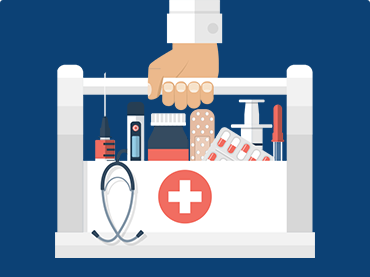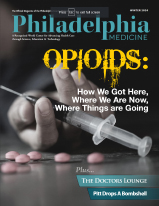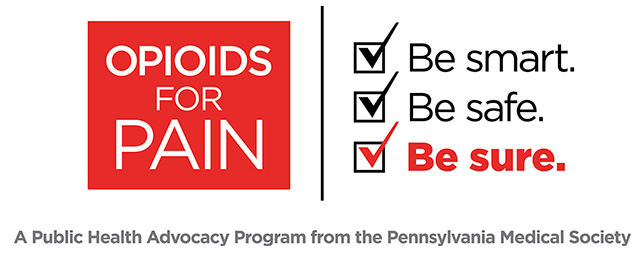On April 21, 2020, the Pennsylvania Department of Health released the following COVID-19 update:
Summary:
- Decisions about return to work for HCP with confirmed or suspected COVID-19 should be made in the context of local circumstances. Options include a test-based strategy or a non-test-based strategy.
- A test-based strategy is preferred, where possible, for healthcare personnel (HCP) given that there is uncertainty about the length of time that a person who has recovered from COVID-19 is infectious.
- In the presence of a shortage of testing supplies or a long turn-around-time for test results and staffing shortages, a non-test-based strategy should be employed.
- Implement strategies described with the CDC guidance for mitigation of staffing shortages.
- If HCP must return to work before meeting criteria, they should ideally perform non-direct care or direct care for persons who are confirmed to have COVID-19.
The Pennsylvania Department of Health (DOH) is releasing the following guidance for making decisions about return to work for healthcare personnel (HCP) with confirmed COVID-19, or who have suspected COVID-19 (e.g., developed symptoms of a respiratory infection [e.g., cough, sore throat, shortness of breath, fever] but did not get tested for COVID-19). This HAN replaces guidance provided specifically for healthcare workers in PA-HAN-489.
Decisions about return to work for HCP with confirmed or suspected COVID-19 should be made in the context of local circumstances. Options include a test-based strategy or a non-test-based strategy.
Return to Work Criteria for HCP with Confirmed or Suspected COVID-19
Use the Test-based strategy as the preferred method for determining when HCP may return to work in healthcare settings:
- Test-based strategy. Exclude from work until
-
- Resolution of fever without the use of fever-reducing medications and
- Improvement in respiratory symptoms (e.g., cough, shortness of breath), and
- Negative results of an FDA Emergency Use Authorized molecular assay for COVID-19 from at least two consecutive nasopharyngeal swab specimens collected ≥24 hours apart (total of two negative specimens) [1]. See Interim Guidelines for Collecting, Handling, and Testing Clinical Specimens for 2019 Novel Coronavirus (2019-nCoV).
The test-based strategy is preferred given that there is uncertainty about the length of time that a person who has recovered from COVID-19 is infectious. Use of a test-based approach might provide a greater level of confidence that HCP are no longer infectious compared to the non-test-based approach. This level of confidence might be particularly important for HCP who regularly come into contact with other HCP and vulnerable patients and residents.
While the test-based strategy is preferred, this strategy will be achievable only where testing results are quickly available (within 2-3 days) and healthcare staff shortages are not threatening patient safety. If limited, available tests should be prioritized for other uses including, but not limited to, testing of symptomatic HCP and patients.
If the Test-based strategy cannot be used, the Non-test-based strategy may be used for determining when HCP may return to work in healthcare settings:
- Non-test-based strategy. Exclude from work until
-
- At least 3 days (72 hours) have passed since recovery defined as resolution of fever without the use of fever-reducing medications and improvement in respiratory symptoms (e.g., cough, shortness of breath); and,
- At least 7 days have passed since symptoms first appeared
HCP with laboratory-confirmed COVID-19 who have not had any symptoms should be excluded from work until 10 days have passed since the date of their first positive COVID-19 diagnostic test assuming they have not subsequently developed symptoms since their positive test.
If HCP had COVID-19 ruled out and have an alternate diagnosis (e.g., tested positive for influenza), criteria for return to work should be based on that diagnosis.
Return to Work Practices and Work Restrictions
After returning to work, HCP should:
- Wear a facemask for source control at all times while in the healthcare facility in accordance with PA-HAN-497.
- A facemask for source control does not replace the need to wear an N95 or higher-level respirator (or other recommended PPE) when indicated, including when caring for patients with suspected or confirmed COVID-19.
-
- Of note, N95 or other respirators with an exhaust valve might not provide source control.
- Be restricted from contact with severely immunocompromised patients (e.g., transplant, hematology-oncology) until 14 days after illness onset
- Self-monitor for symptoms, and seek re-evaluation from occupational health if respiratory symptoms recur or worsen
- Ensure that recovered HCW wear all indicated PPE according to facility policy. The immunity of recovered persons to COVID-19 infection is not known, and a lack of proper PPE could expose HCP to other communicable diseases.
Strategies to Mitigate Healthcare Personnel Staffing Shortages
Maintaining appropriate staffing in healthcare facilities is essential to providing a safe work environment for healthcare personnel (HCP) and safe patient care. As the COVID-19 pandemic progresses, staffing shortages occur due to HCP exposures, illness, and need to care for family members at home. Healthcare facilities must be prepared for potential staffing shortages and have plans and processes in place to mitigate them, including considerations for permitting HCP to return to work without meeting all return to work criteria above.
If there are no longer enough staff to provide safe patient care, and other contingency capacity strategies have been exhausted (see CDC strategies), healthcare facilities and employers may need to implement crisis capacity strategies to continue to provide patient care.
Under crisis capacity strategies, HCP who have recovered from COVID-19, and are well enough to work, are permitted to return to work before meeting above criteria. Such HCP should be restricted from contact with severely immunocompromised patients (e.g., transplant, hematology-oncology) and facilities should consider prioritizing their duties in the following order:
- If not already done, allow HCP with suspected or confirmed COVID-19 to perform job duties where they do not interact with others (e.g., patients or other HCP), such as in telemedicine services.
- Allow HCP with confirmed COVID-19 to provide direct care only for patients with confirmed COVID-19, preferably in a cohort setting.
- Allow HCP with confirmed COVID-19 to provide direct care for patients with suspected COVID-19.
- As a last resort, allow HCP with confirmed COVID-19 to provide direct care for patients without suspected or confirmed COVID-19.
If HCP are permitted to return to work before meeting all return to work criteria, they should still adhere to all Return to Work Practices and Work Restrictions recommendations described above.
Refer to the Strategies to Mitigate Healthcare Personnel Staffing Shortages document for more information.
Footnotes
[1] – All test results should be final before isolation is ended. Testing guidance is based upon limited information and is subject to change as more information becomes available. In persons with a persistent productive cough, SARS-CoV-2-RNA might be detected for longer periods in sputum specimens than in upper respiratory tract (nasopharyngeal swab) specimens.Definitions
Cloth face covering: Textile (cloth) cover that are intended to keep the person wearing one from spreading respiratory secretions when talking, sneezing, or coughing. They are not PPE and it is uncertain whether cloth face coverings protect the wearer. Guidance on design, use, and maintenance of cloth face coverings is available.
Facemask: Facemasks are PPE and are often referred to as surgical masks or procedure masks. Use facemasks according to product labeling and local, state, and federal requirements. FDA-cleared surgical masks are designed to protect against splashes and sprays and are prioritized for use when such exposures are anticipated, including surgical procedures. Facemasks that are not regulated by FDA, such as some procedure masks, which are typically used for isolation purposes, may not provide protection against splashes and sprays.
Respirator: A respirator is a personal protective device that is worn on the face, covers at least the nose and mouth, and is used to reduce the wearer’s risk of inhaling hazardous airborne particles (including dust particles and infectious agents), gases, or vapors. Respirators are certified by the CDC/NIOSH, including those intended for use in healthcare.




